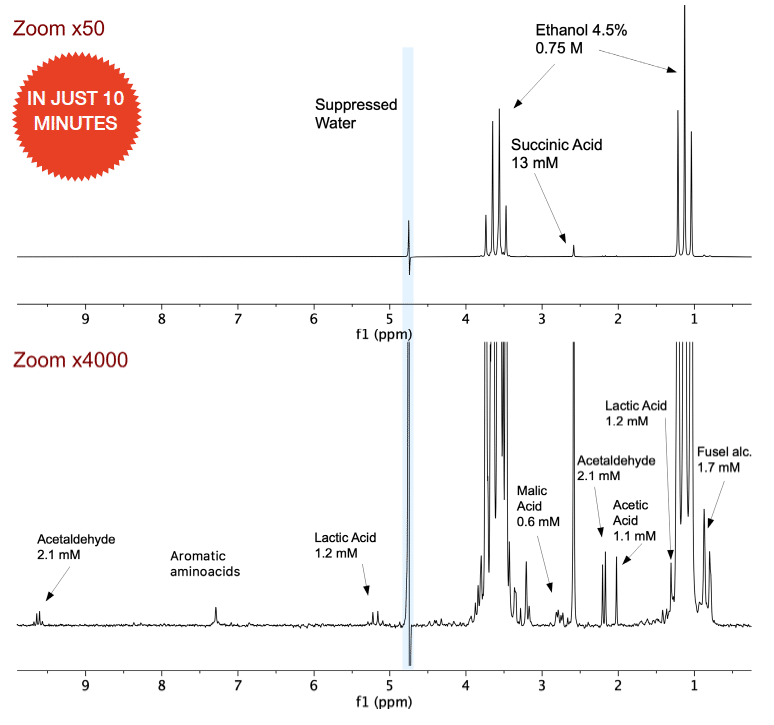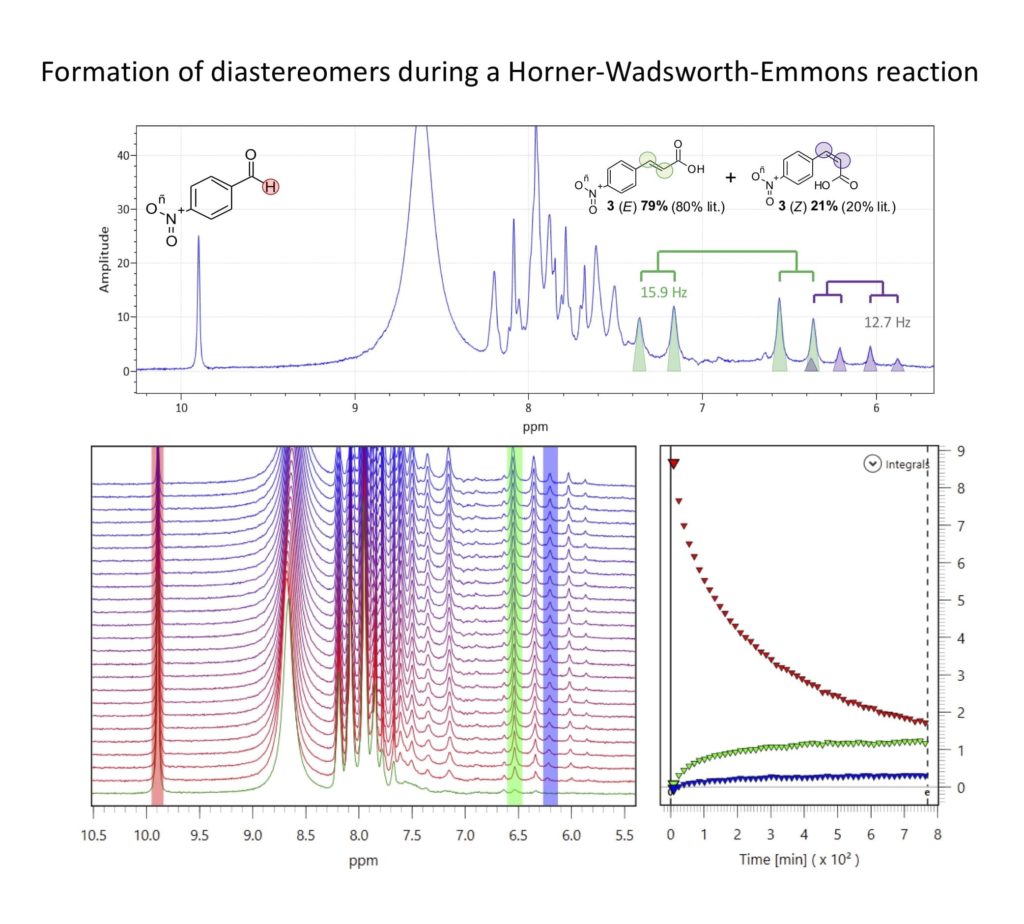Home Products Spinsolve family Benchtop NMR Spinsolve 80 MHz
Introducing the Spinsolve 80 ULTRA
Optimum solvent suppression performance for samples in protonated solvents
Download resources
Features of Spinsolve 80 MHz
- Brochure Spinsolve 80 MHz
- Brochure Spinsolve Multi-X
- Brochure Spinsolve Ultra
- Brochure Spinsolve Autosampler
- App Note Multi-nuclear diffusion
- Case Study Spinsolve Quinine
- Case Study Structure verification of Brucine
- Case Study Spinsolve Erythromycin A
- Case Study Spinsolve Artemisinin
- Case Study Spinsolve Gibberellic Acid
- Case Study Spinsolve Cholesterol
- Case Study Forensics Application Summary
- 1H frequency: 80 MHz
- 1H and 19F on all systems + X nuclei for dual channel systems
- Resolution:
Spinsolve 80
- Linewidth at 50% <0.4 Hz
- Linewidth at 0.55% <15 Hz
- Linewidth at 0.11% <30 Hz
Spinsolve 80 Ultra:
- Linewidth at 50% <0.2 Hz
- Linewidth at 0.55% <8 Hz
- Linewidth at 0.11% <16 Hz
- Sensitivity: 280:1 (Single channel for 1% Ethyl Benzene)
- Sensitivity: 200:1 (Dual channel for 1% Ethyl Benzene)
- 3D PFG gradients optimized for gradient-enhanced methods
- Optional PFG gradients for diffusion spectroscopy (>0.5 T/m)
- No cryogens
- External Hardware Lock with no need for deuterated solvents
- Unparalleled stability
- Suitable for on-line reaction monitoring
- Easy to operate
- Compatible with automatic sample changer
- Dimensions: 58 x 43 x 40 cm (23” x 17” x 16”)
- Weight: 72.5 kg (160 lb)
Sensitivity measured in a single scan on a 1% ethylbenzene sample dissolved in deuterated chloroform. The signal used for the calculation is the one of the methylene group and the noise is calculated for a signal free region between the aromatic and the methylene signa
The best performance for online reaction monitoring
Metabolites produced by S. Cereviciae during Glucose Fermentation

The Spinsolve 80 ULTRA is
ideal to study biochemical
processes like fermentations. The high sensitivity of
the 80 MHz model makes it
possible to detect metabolites produced at sub millimolar concentrations in just
minutes. In this particular example, solvent suppression
was combined with carbon
decoupling to eliminate the
carbon satellites of the NMR
signals of ethanol produced
during the fermentation process. The residual water
peak covers about 0.1 ppm
of the spectrum, making it
possible to detect metabolites very close to the solvent
peak.

The Spinsolve 80 ULTRA device was used in combination with our reaction monitoring software package
to follow the course of a reaction on-line and also to determine its stereochemical outcome. As an example, the well-known Horner-Wadsworth-Emmons reaction (HWE reaction) was carried out and the result is
shown in the figure below. The HWE reaction was essentially developed to form the E-diastereoisomer as
the reaction product in favour of the corresponding Z-counterpart.
Resources
Specifications
Nuclei: 1H, 19F, 13C (Other Nuclei Available)
- Operating frequency: 80 MHz (1H)
- Resolution:
- Spinsolve 80 : <0.4 Hz (50%) / <15 Hz (0.55%) / <30 Hz (0.11%)
- Spinsolve 80 Ultra: <0.2 Hz (50 %) / <8 Hz (0.55%) / <16 Hz (0.11%)
- 1H Sensitivity (*)(Single channel): >280:1 for 1% Ethyl Benzene
- 1H Sensitivity (*)(dual channel): >200:1 for 1% Ethyl Benzene
- Operating Temperature Range: 18° C to 28° C (65° F to 82° F)
- Sample: Standard 5 mm OD NMR sample tubes, 7″ length
- Minimum Sample Volume: 200 uL
- External Hardware Lock with no need for deuterated solvents
- Deuterium solvent not required
- Optional PFG gradients for diffusion spectroscopy (>0.5 T/m)
- 3D PFG gradients optimized for gradient-enhanced methods
- Dimensions: 58 x 43 x 40 cm (23” x 17” x 16”)
- Weight: 72.5 kg (160 lb)
- Stray Field: < 2 G all around system
- Voltage Requirement: 100-240 VAC, 50/60 Hz
- Available with automatic sample changer












